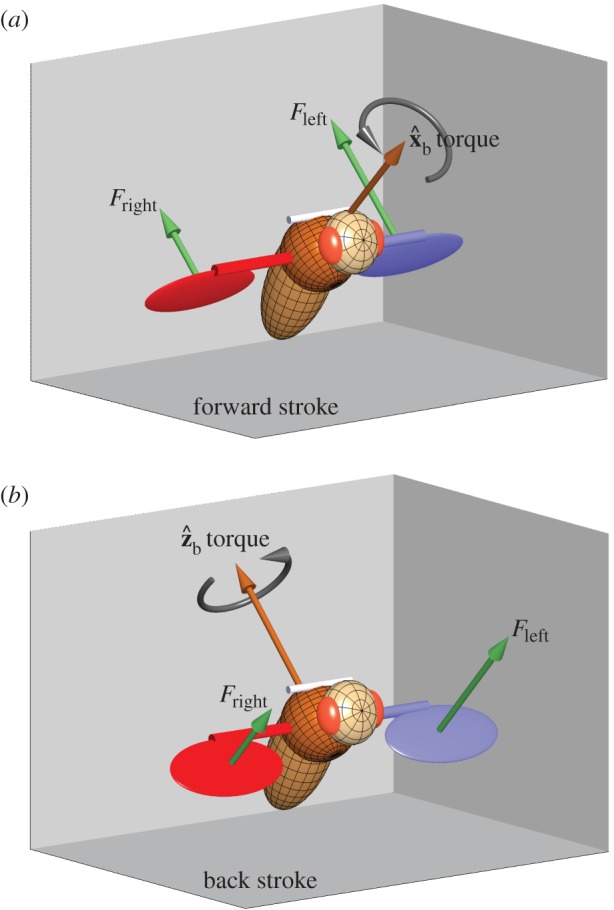Figure 4.

A toy model for torque production. Consider a fly with a body pitch angle of 45° and applying a stroke-amplitude asymmetry, such that its left wing (blue) exerts a larger aerodynamic force than its right wing (red) Fleft > Fright. The aerodynamic forces (green arrows) are perpendicular to the surface of each wing. (a) During the middle of a forward stroke, the wings are assumed to flap with an angle of attach of 45°, hence the aerodynamic forces are perpendicular to the body  (roll) axis. Since their torque arms are along the span vector, which is parallel to the
(roll) axis. Since their torque arms are along the span vector, which is parallel to the  body axis, the net aerodynamic torque is along
body axis, the net aerodynamic torque is along  . The torque is exerting a roll acceleration to the right. (b) During the middle of a back stroke, we also assume an angle of attack of 45°, which implies that the aerodynamic forces are perpendicular to the
. The torque is exerting a roll acceleration to the right. (b) During the middle of a back stroke, we also assume an angle of attack of 45°, which implies that the aerodynamic forces are perpendicular to the  body axis. The torque arms are still along
body axis. The torque arms are still along  , hence the net torque is along the
, hence the net torque is along the  axis. The net torque has a combined effect on the body Euler angles, including roll right, yaw right and pitch down as shown in figure 3.
axis. The net torque has a combined effect on the body Euler angles, including roll right, yaw right and pitch down as shown in figure 3.
